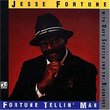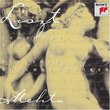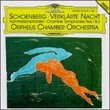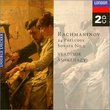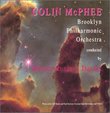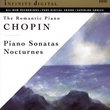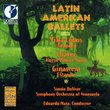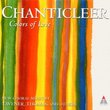| All Artists: Takemitsu, Horigome, Tmso Title: Requiem for Strings / November Steps Members Wishing: 2 Total Copies: 0 Label: Denon Records Release Date: 3/1/1994 Album Type: Import Genre: Classical Styles: Forms & Genres, Concertos, Historical Periods, Modern, 20th, & 21st Century, Instruments, Strings Number of Discs: 1 SwapaCD Credits: 1 UPC: 081757944120 |
Search - Takemitsu, Horigome, Tmso :: Requiem for Strings / November Steps
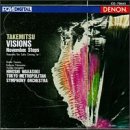 | Takemitsu, Horigome, Tmso Requiem for Strings / November Steps Genre: Classical
|
Larger Image |
CD DetailsSimilar CDs
Similarly Requested CDs
|
CD ReviewsA collection of pieces from a wide span of his career, a cou Christopher Culver | 08/07/2008 (3 out of 5 stars) "While certain pieces by Toru Takemitsu have been recorded again and again, kept in print by labels like Deutsche Grammophon and Naxos, some key orchestral works were available only on an obscure series of Denon releases in the 1990s (the others are B0000034XI, B0000034QA, and B00000BIJ6). Here Hiroshi Wakasugi led the Tokyo Metropolitan Symphony Orchestra, and Takemitsu personally supervised the recording. Brilliant Classics has recently reissued some of the rare contents of these records at budget price, but this 2 CD box doesn't appear to be available in the United States.
Takemitsu's music was always somewhat slow and meditative; he often mentioned that the Japanese have no sense of allegro time. Nonetheless, in the late 1960s he went through his "modernist apogee" where some striking contrasts flared up. His most famous work of this era, and probably his masterpiece, is "November Steps" for shakuhachi, biwa and orchestra (1969). Written after this child of World War II had finally reconciled himself to his Japanese heritage, the piece combines the impressionism that Takemitsu learnt from Debussy and Messiaen with two of the most ancient Japanese instruments. But this is no crossover effort, for Takemitsu wanted to highlight just how different and possibly irreconcilable East and West were. The orchestra starts things off and builds to a thrilling climax, one of the few moments in all of Takemitsu's oeuvre that could be called violent. Then, they withdraw while the Japanese soloists play a series of variations (= "steps" in native terminology). Orchestra and soloists subsequently alternate throughout the work, never reaching any dialogue. Perhaps that sounds sad, but I find this a very exciting work. Performances of "November Steps" were recorded also on Philips Classics (Saito Kinen Orchestra and Seiji Ozawa) and NM Clarssics (a box set celebrating the Concertgeouw and Bernard Haitink), all featuring the same soloists. These are also now out of print. I prefer the Ozawa recording myself. An extract, the tenth "step", can be heard on a DG reissue in the "Echo 20/21" series. "Requiem" for strings (1957) was Takemitsu's first hit, bringing him to international attention when Stravinsky heard it and began to champion the obscure young Japanese composer. This is the prototype for almost all of his music excepting that modernist interlude, with its slow lines and evasion of any outright drama. What I like about "Requiem", however, is its immense purity and singlemindedness, for while the composer later wove frozen orchestral fabrics from many diverse strands, here things all seem on the same page. After the mid-1970s, Takemitsu's work entered a period that, depending on my mood at the time, I see as either stagnation or powerful artistic vision. Embarking on a style that he called the "sea of tonality" (from his heavy use of the motif B flat/Es-E-A), he wrote piece after piece where the lush orchestral sound is at any given moment vaguely tonal and melodic, but the whole remains chromatic. These works are very difficult to distinguish from each other, even his efforts in the concerto genre. "Far calls. Coming, far!" for violin and orchestra (1980) must take Debussy's "Premiere Rhapsody" as its model, for the soloist is in no way in dialogue with the orchestra, but rather just forms the most prominent strand in the texture. "Visions" (1990), in two movements titled "Mystere" and "Les Yeux Clos", is another fairly generic orchestral work. The second movement is something of an orchestration of a piano piece Takemitsu wrote in 1979, but I actually feel that the piano piece was more engaging due to its exploration of piano resonance and a certain level of thrilling virtuosity. Though "November Steps" is a masterpiece and "Requiem" is worth hearing, I've rated this three stars because of the difficulty of judging the late works. If you can get the Brilliant Classics box set, do. It's priced economically enough that even ordering it from Europe shouldn't be too big an undertaking." |

 Track Listings (5) - Disc #1
Track Listings (5) - Disc #1![The Ghettoelectro Chronicles [ECD]](https://nationalbookswap.com/cd//m/56/8256/348256.jpg)
